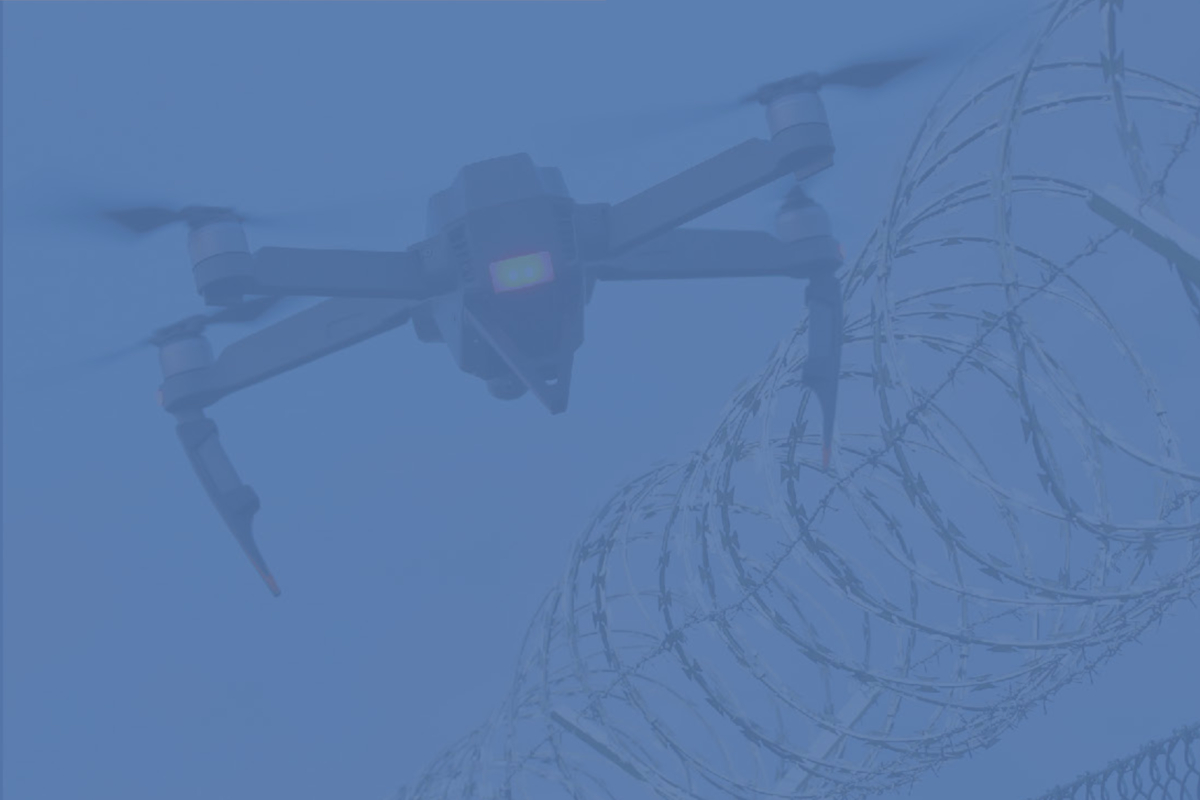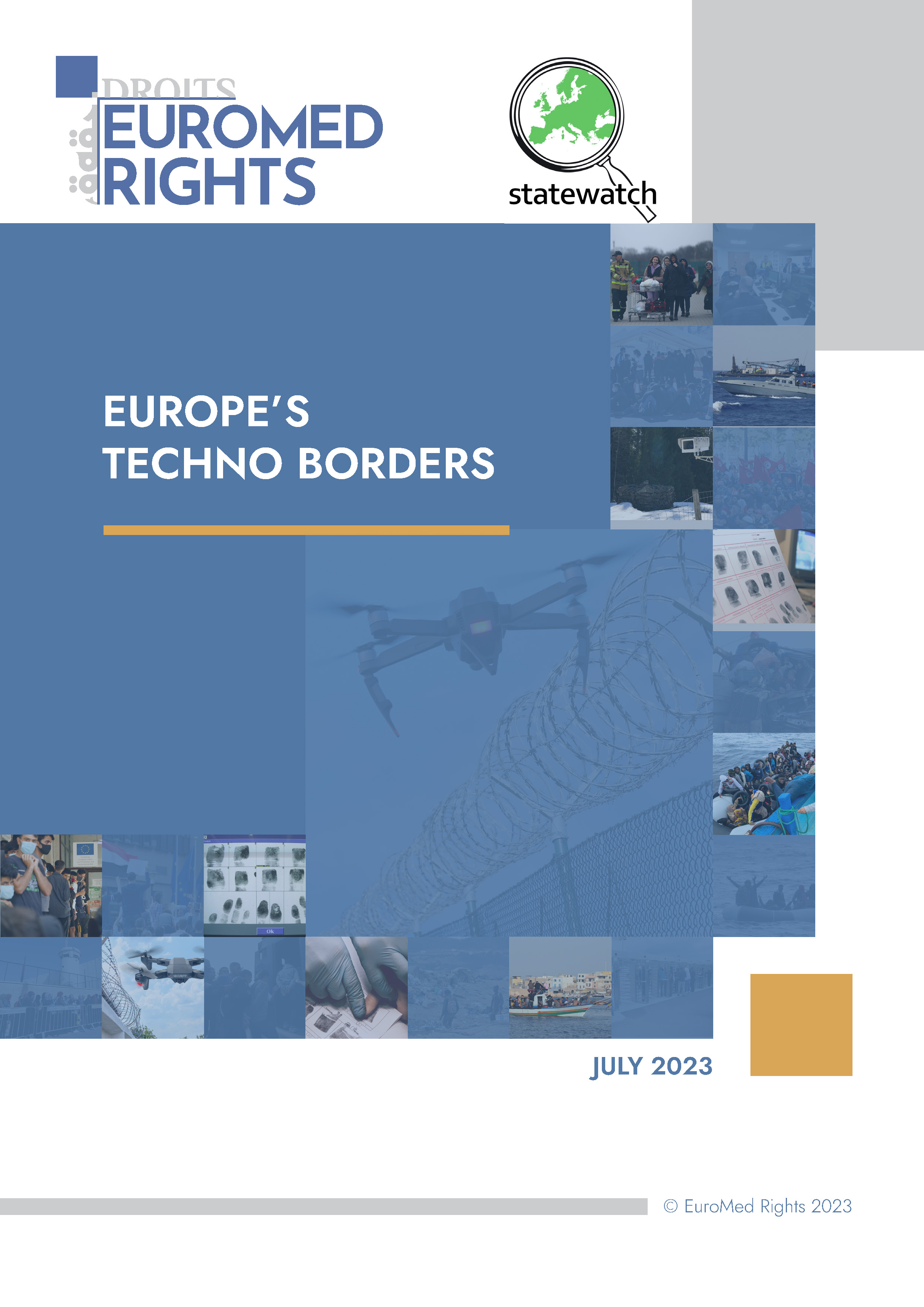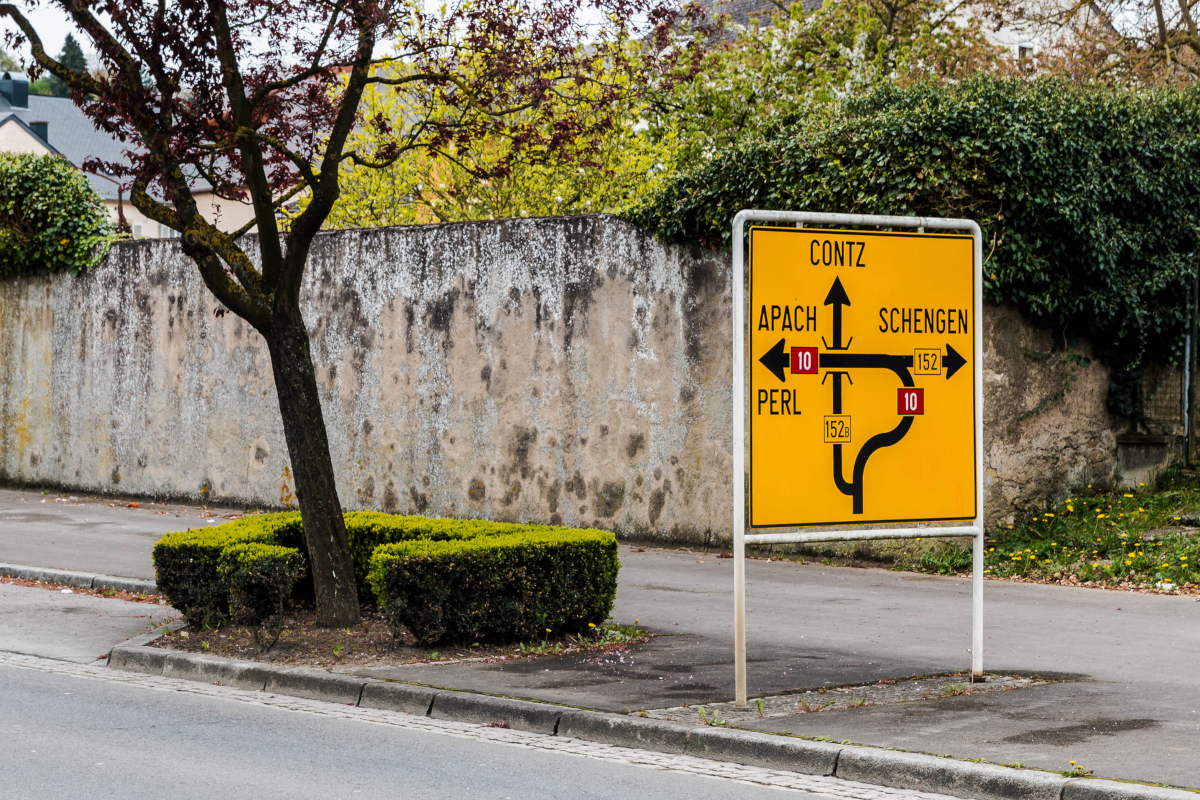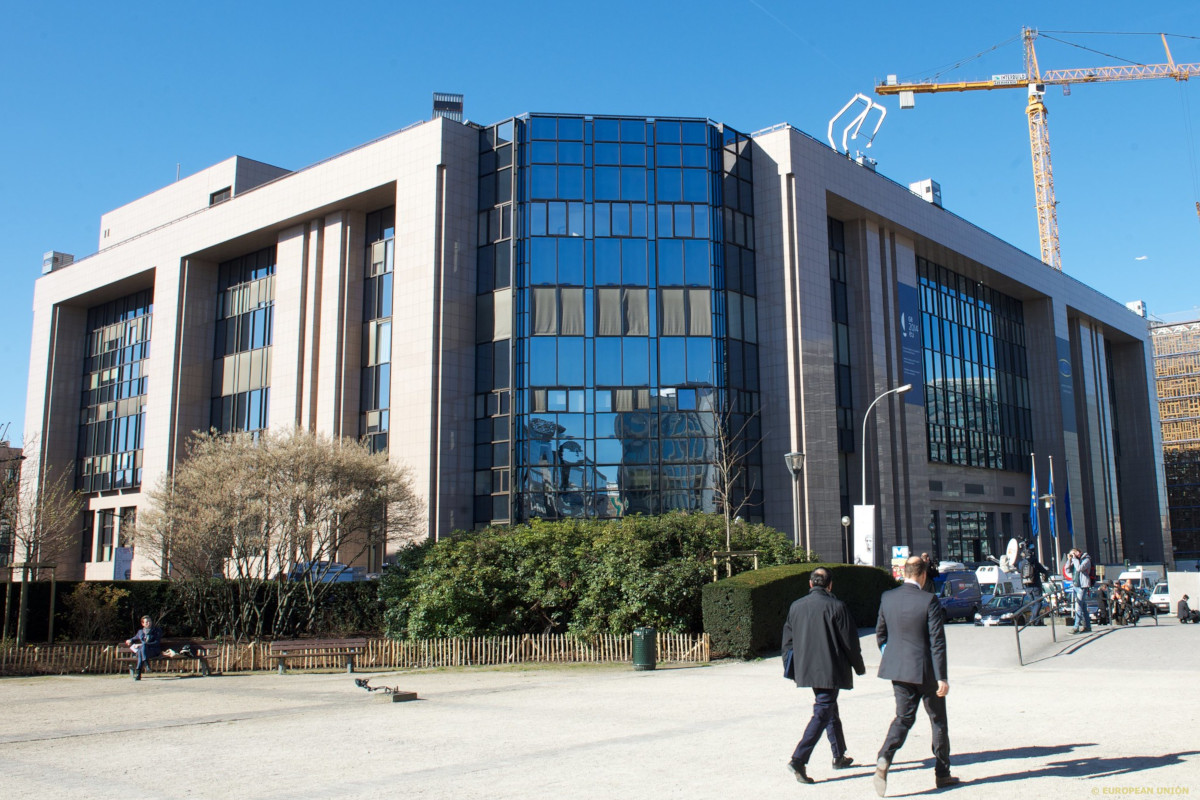Europe’s techno-borders: digital infrastructure for migration control
Topic
Country/Region
10 July 2023
A new Statewatch/EuroMed Rights publication analyses the past, present and future of Europe’s “techno-borders” – the extensive infrastructure of surveillance systems, databases, biometric identification techniques and information networks put in place over the last three decades to provide authorities with knowledge of – and thus control over – foreign nationals seeking to enter or staying in EU and Schengen territory.
Support our work: become a Friend of Statewatch from as little as £1/€1 per month.

Read the full report: Europe's techno-borders
Launch event: Surveillance technology and artificial intelligence: what impact for people on the move?
Digitised borders
The digital technologies deployed as part of Europe’s techno-borders underpin invasions of privacy, brutal violations of human rights, and make the border ‘mobile’, for example through the increased use of mobile biometric identification technologies, such as handheld fingerprint scanners used by police and border authorities.
On the one hand, the aim is to facilitate the movements of “bona fide” travellers. In the years to come, tourists and businesspeople will be required to hand over increasing amounts of personal information to EU and member state authorities in exchange for being granted entry to the EU. That information will then be used to train algorithms that will be applied to new applications to enter the bloc, in order to assess the level of risk or threat posed by individuals (and, where that level is deemed too high, to deny them the ability to travel to the EU).
On the other hand, the aim is to detect, deter and repel refugees and migrants seeking to enter EU territory through irregular journeys. Drones, cameras, social media monitoring, satellite imagery and networks of sensors form part of an elaborate surveillance architecture that is being continually extended. Those who do manage to enter EU territory – which is to say, if they are not illegally pushed back by EU authorities, or prevented from leaving a “third country” – are also biometrically registered and screened against a multitude of national and international databases. If they are deported, international data-sharing systems are increasingly being used to facilitate that task.
Public funding
Vast quantities of public funding are required to sustain and extend this border infrastructure. The total size of the budgets that will contribute to EU border policies has increased by 94% in the current budgetary period (2021-27) compared to the previous one (2014-20). Billions of euros will be spent on extending and entrenching Europe’s techno-borders in the years to come.
For example, from 2014 to 2020, the Greek authorities received almost €977 million from the EU’s home affairs funds, dealing with policing; borders; and asylum and integration. In the 2021-27 period, that amount has been increased to just over €1.5 billion. The funding directed specifically towards borders has skyrocketed from almost €303 million to more than €1 billion – an increase of 248%, despite the ongoing violations of human rights at Greece’s borders.
This is not the only vast increase. France is to receive almost 200% more from the borders budget than it did in the 2014-20, obtaining nearly €207 million; Croatia will receive almost 100% more, obtaining €155 million; and Spain’s share will increase by 34%, to some €325 million.
Public funding is also used to develop new border technologies. Through its security research programme, the EU has invested in automated lie detectors to be deployed at border crossing points, the development of automated border control gates, systems using “big data” to try to predict migration movements, and swarms of drones for border surveillance.
Between 2014 and 2022, the EU has provided more than €250 million to 49 projects seeking to develop border technologies. Think tanks and research institutes feature prominently amongst the entities that have benefited from that funding. The Greek Center for Security Studies (€12.8 million), France’s Commissariat à l'énergie atomique et aux énergies alternatives (€8.4 million), TNO from the Netherlands (€4.5 million), Germany’s Fraunhofer Institute (€4.4 million) and the Centre for Research and Technology Hellas (€4.3 million) make up the top five recipients. They are joined by a range of private companies, two universities, and even the NATO Science and Technology Organisation.
Present and future
Upcoming legislation will play a role in reinforcing Europe’s techno-borders – in particular, the Eurodac Regulation, the Screening Regulation, changes to the Schengen Borders Code, and the Artificial Intelligence Act.
These four measures are all currently under debate in the Council of the EU and the European Parliament, and have substantial implications for the rights of migrants and refugees. Those implications may also extend to non-white EU citizens and residents: the changes to the Schengen Borders Code, for example, look likely to encourage profiling operations within EU territory in the name of tracking down irregular migrants for return (deportation) purposes.
Meanwhile, future efforts are likely to be focused on the optimisation and intensification of Europe’s techno-borders, as demonstrated by official reports and studies published in recent years. None propose any substantial change in EU policies in these areas, but instead focus on issues such as introducing new types of biometric identification systems, further extending border surveillance systems, and integrating automated systems into all manner of procedures and processes.
Many of the changes proposed do not require specific changes to legislation, and instead are presented as technical issues that merely require the right mixture of funding and management to be implemented effectively. In this manner, they may well escape any substantial public and political scrutiny.
A long-term plan
The use of new technologies for migration and border control – the development of techno-borders – not only presents substantial challenges for the protection of human rights in and of itself. It also creates certain ‘path dependencies’ that have substantial influence over future developments.
These systems and technologies are also a source of substantial potential profit for private companies, who have a vested interest in the wider deployment of surveillance, identification and information systems.
The development of techno-borders, the influence they have on future policy developments, and the industry lobby that surrounds them, require continuous, close and critical investigation as part of the broader struggle to implement humane migration and asylum policies.
Our work is only possible with your support.
Become a Friend of Statewatch from as little as £1/€1 per month.
Further reading

Europe's techno-borders
The digital technologies deployed as part of Europe’s techno-borders underpin invasions of privacy, brutal violations of human rights, and make the border ‘mobile’, for example through the increased use of biometric identification technologies, such as handheld fingerprint scanners. This report analyses the past, present and future of Europe’s “techno-borders,” the infrastructure put in place over the last three decades to provide authorities with knowledge of – and thus control over – foreign nationals seeking to enter or staying in EU and Schengen territory.

Not so interoperable: discussions underway to “decouple” launch of new EU border databases
Ongoing delays to the Entry/Exit System (EES) may mean the European Travel Information and Authorization System (ETIAS) is put into operation first, in a break with previous plans.

Schengen priorities: full steam ahead with border controls and law enforcement
A meeting of the Schengen Council, put in place under the French Presidency to improve governance of the Schengen area, is taking place today. A note from the Swedish Presidency of the Council outlines areas requiring “additional focus and impetus” if progress is to be made in the 2023/24 ‘Schengen Cycle’.
Spotted an error? If you've spotted a problem with this page, just click once to let us know.

